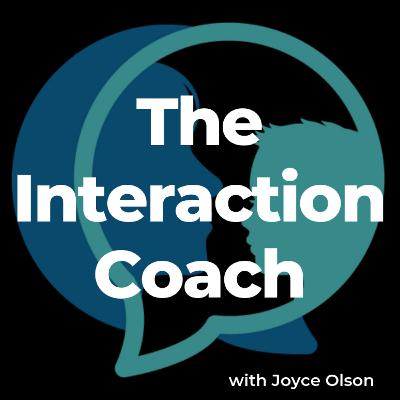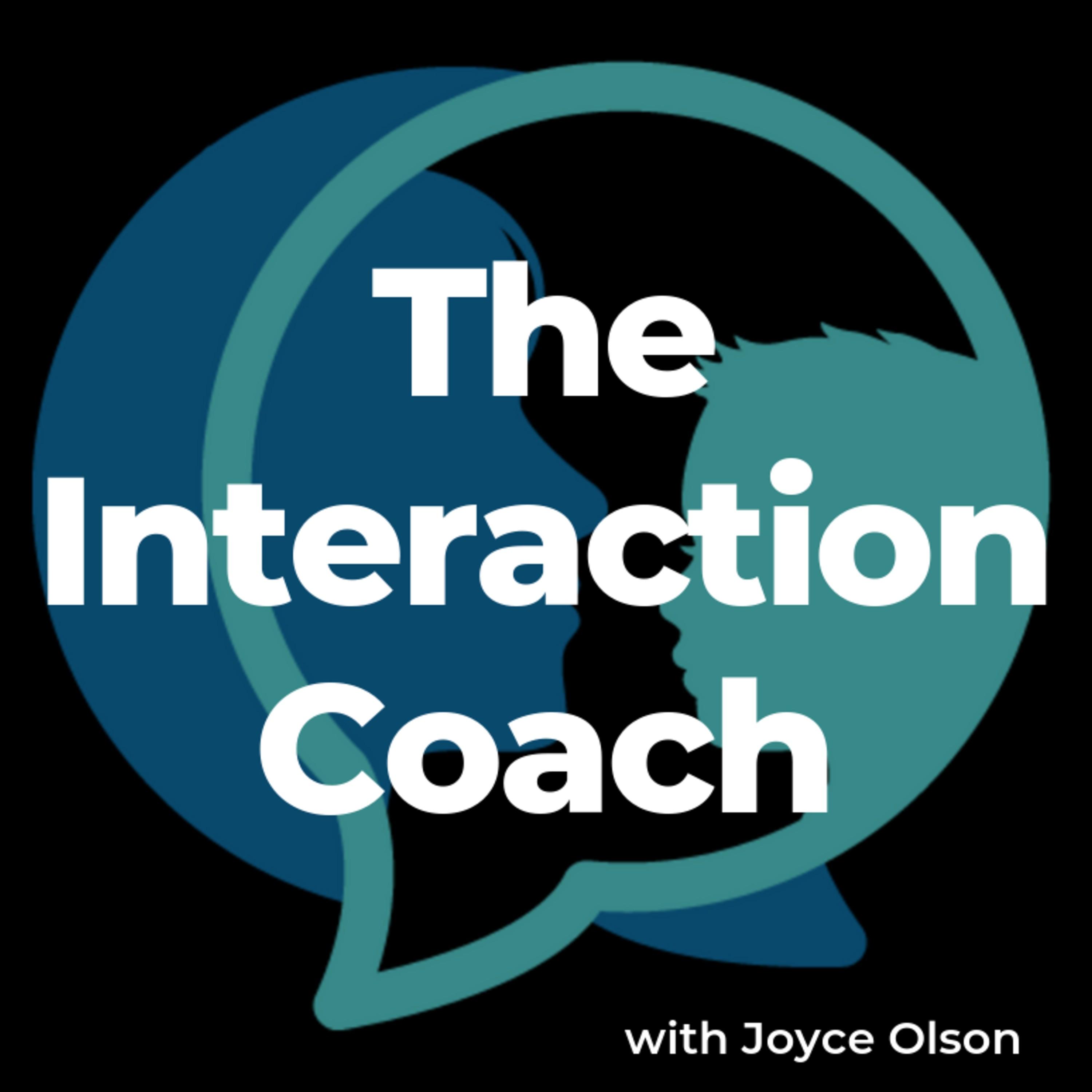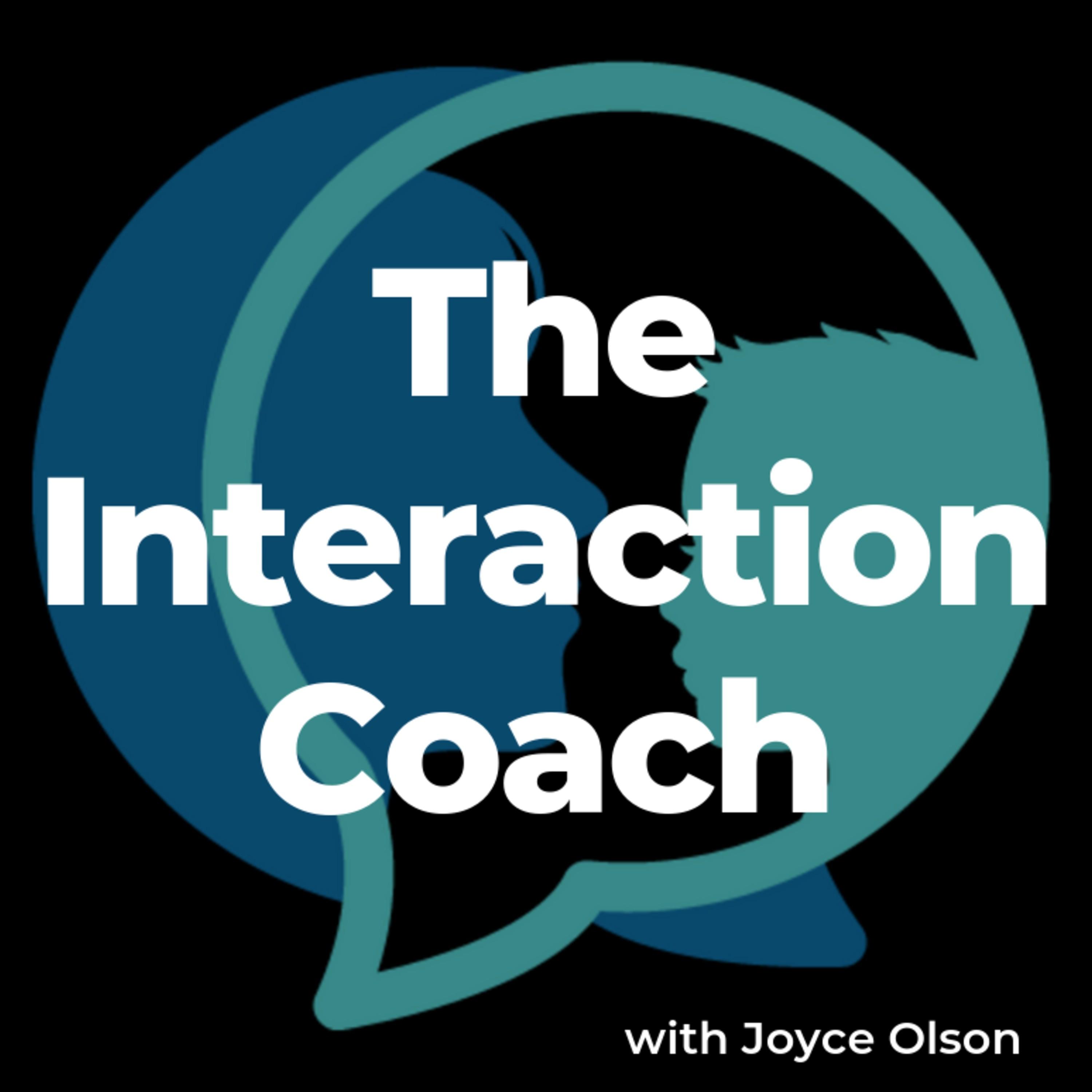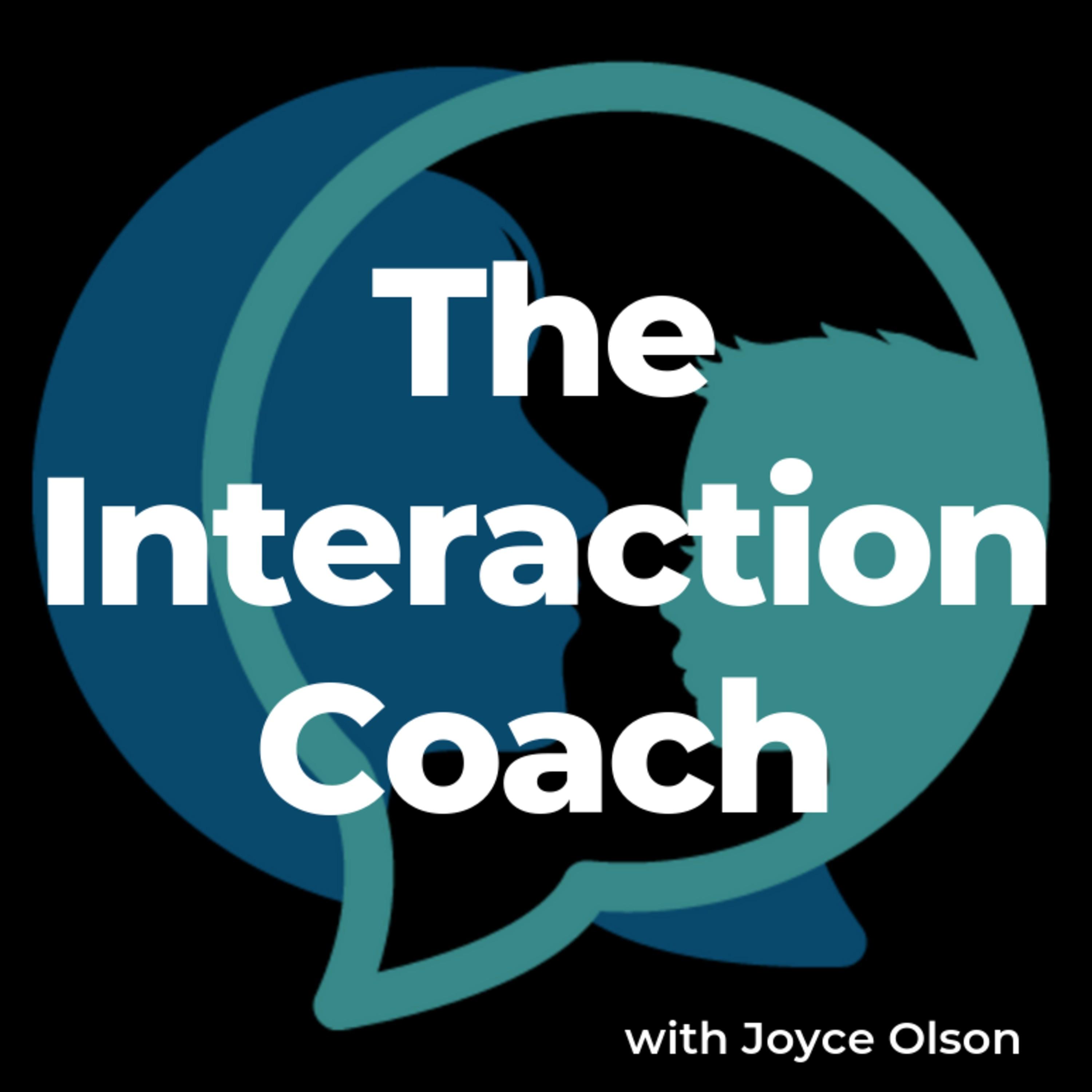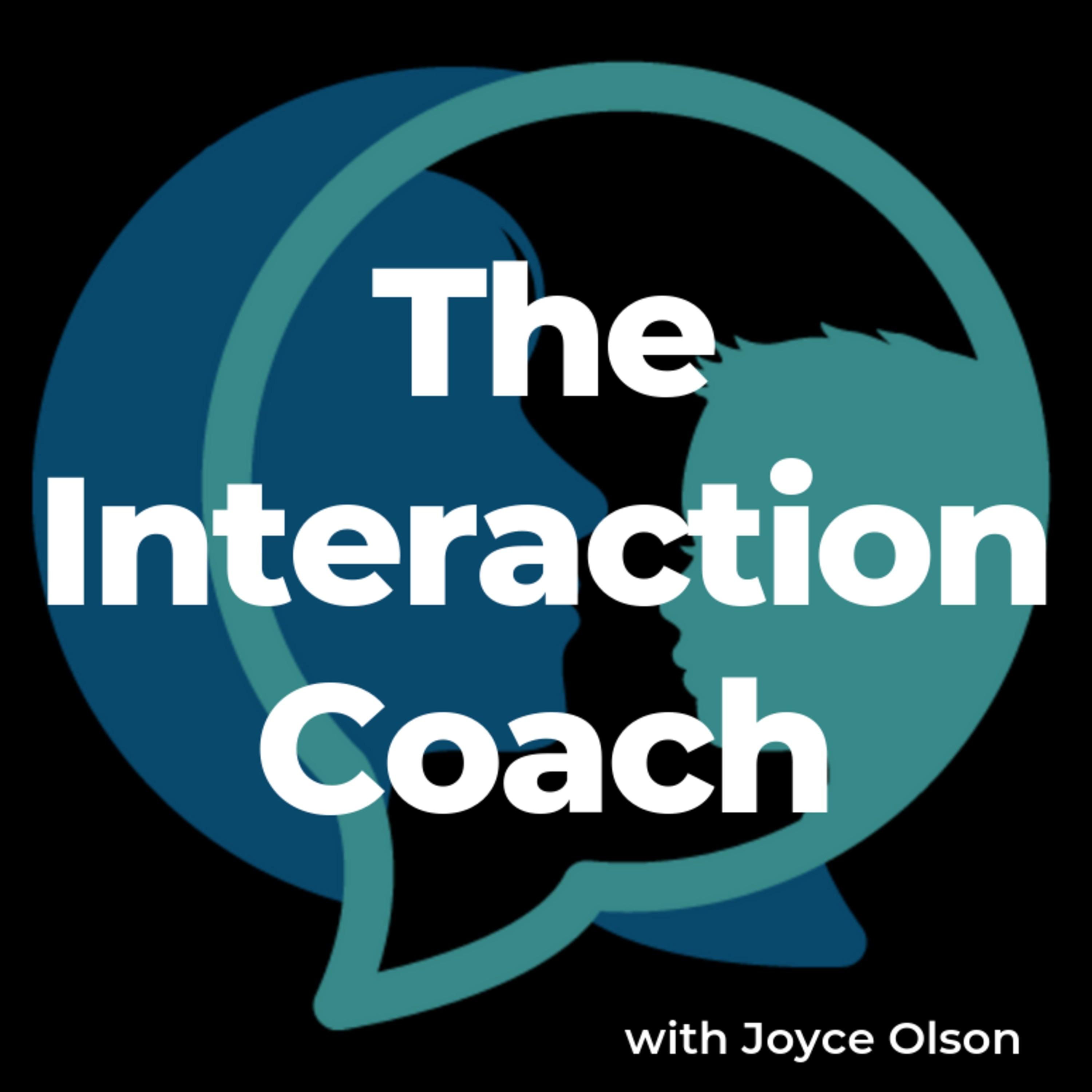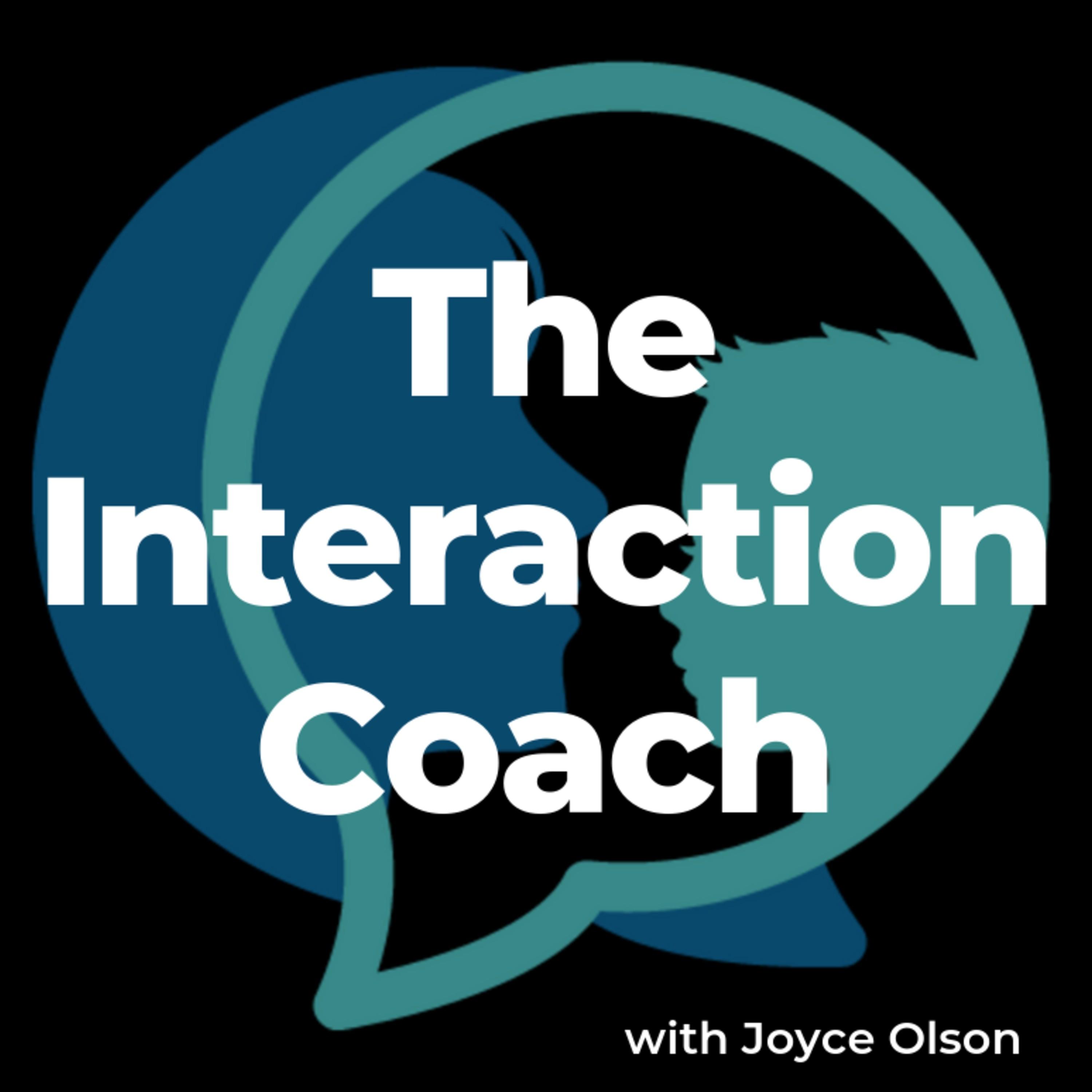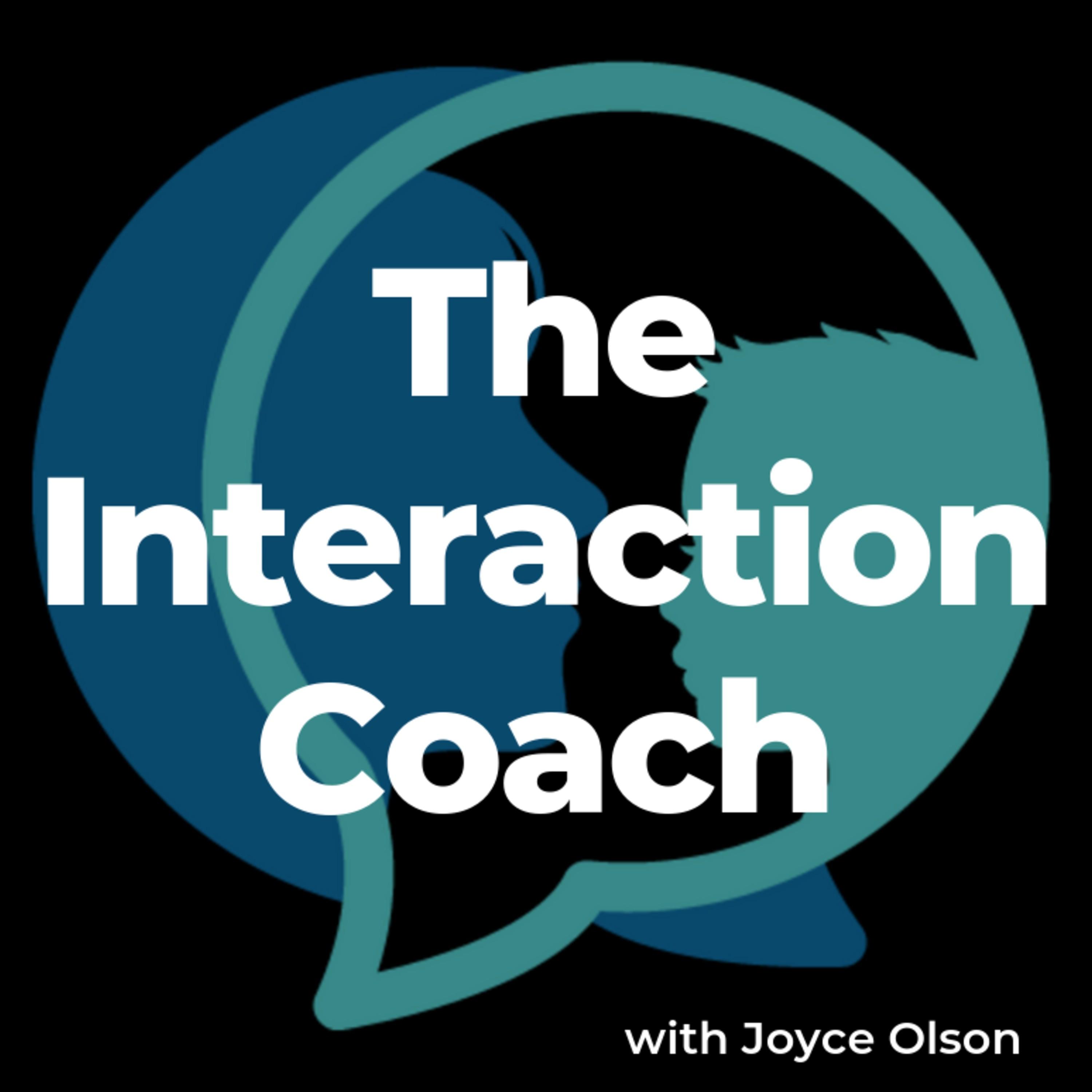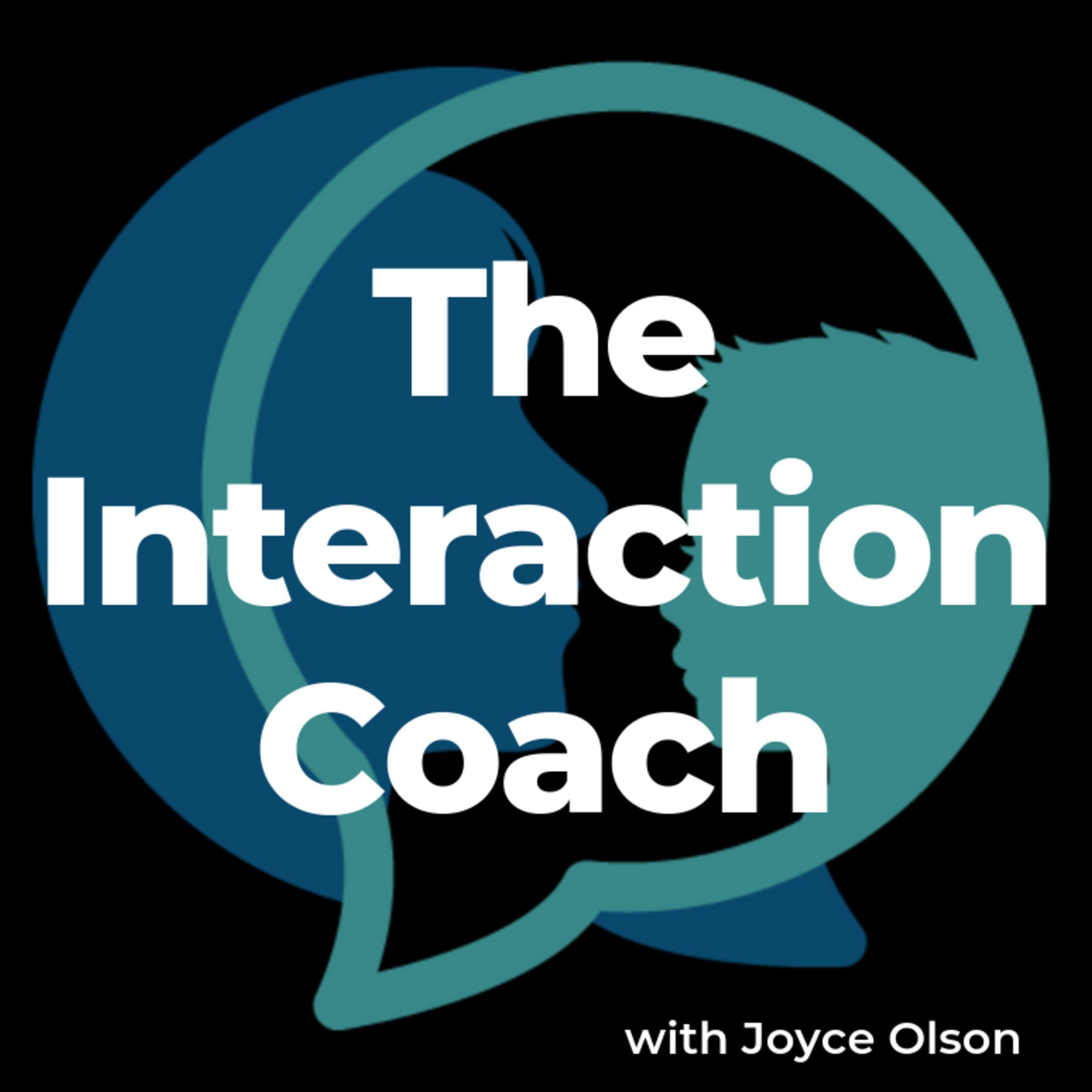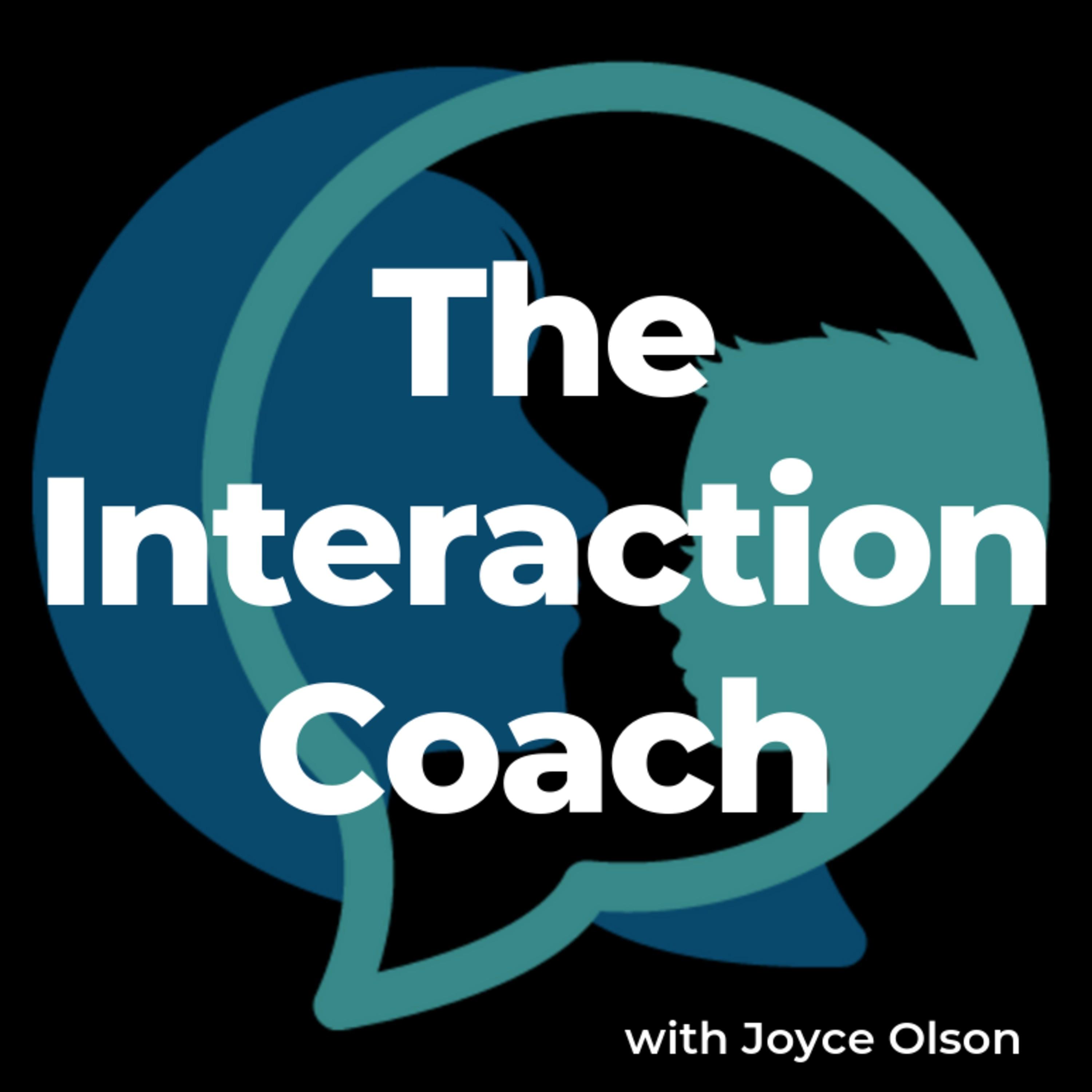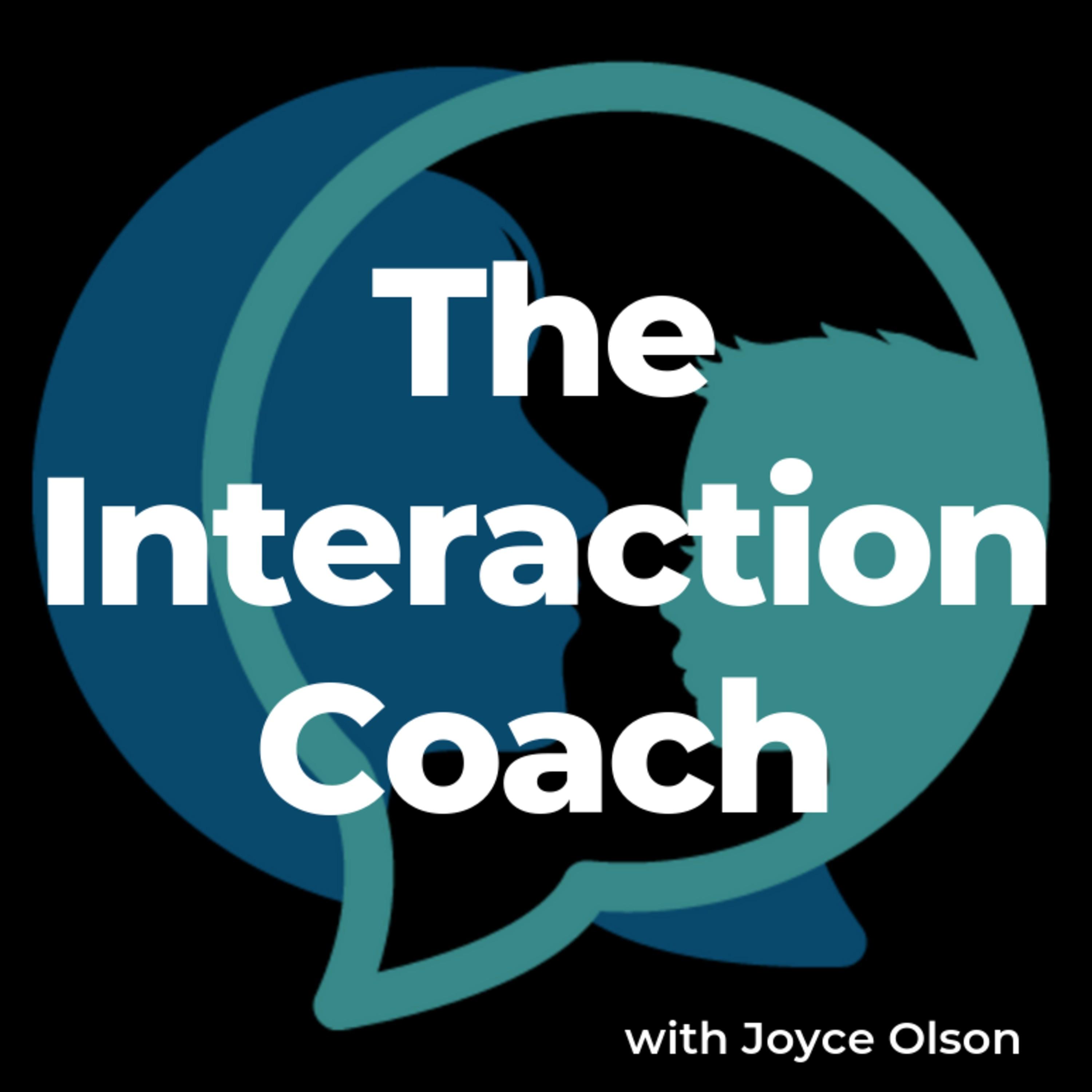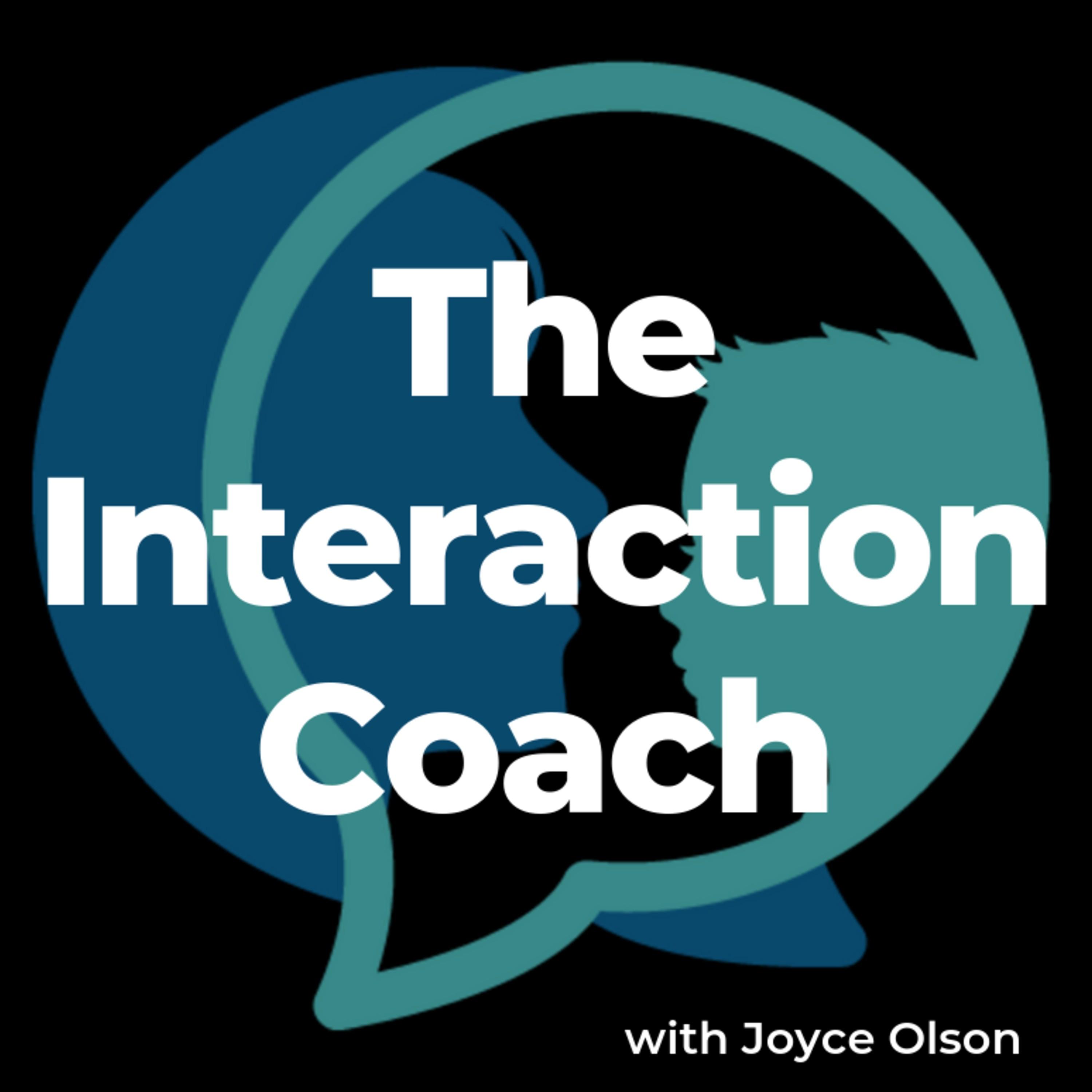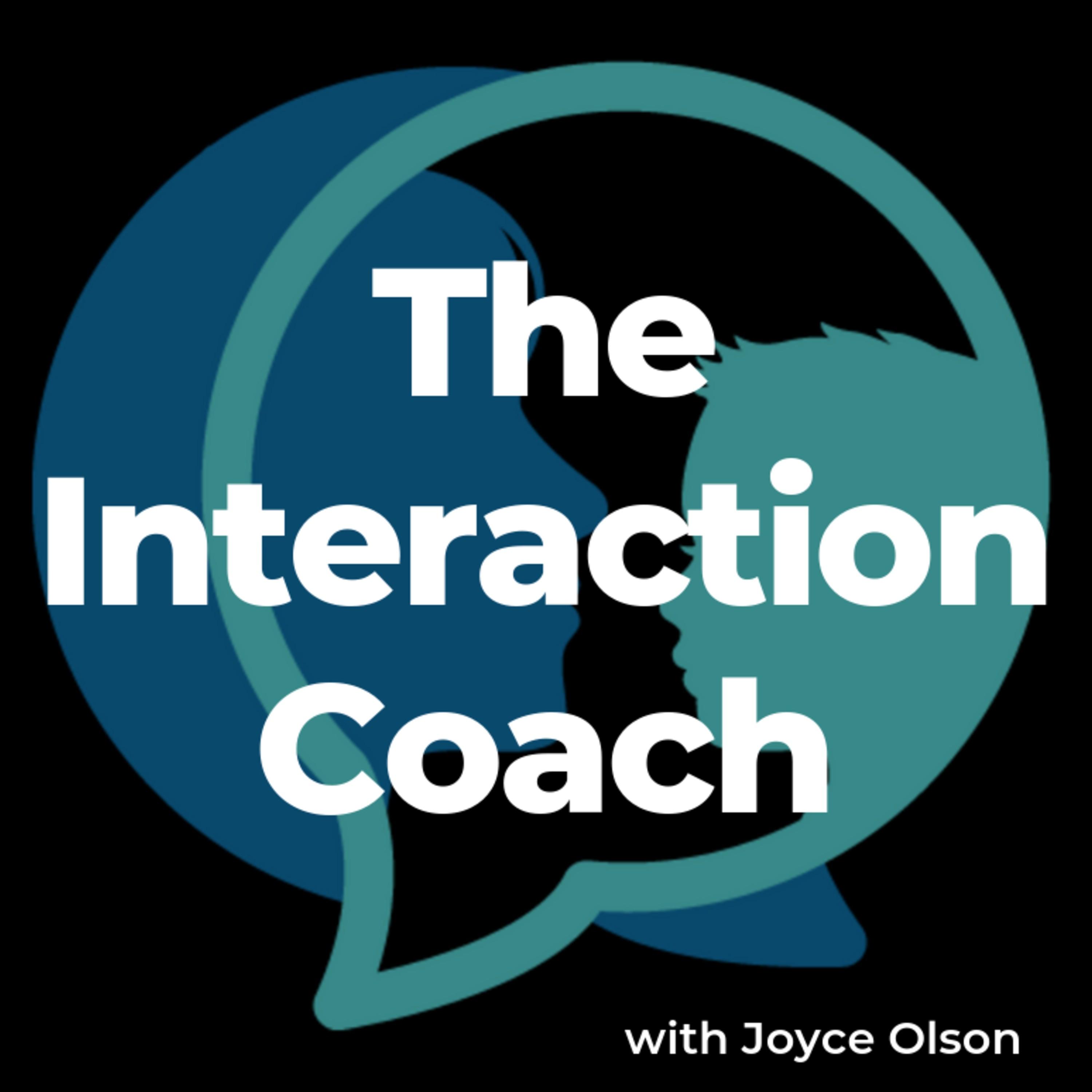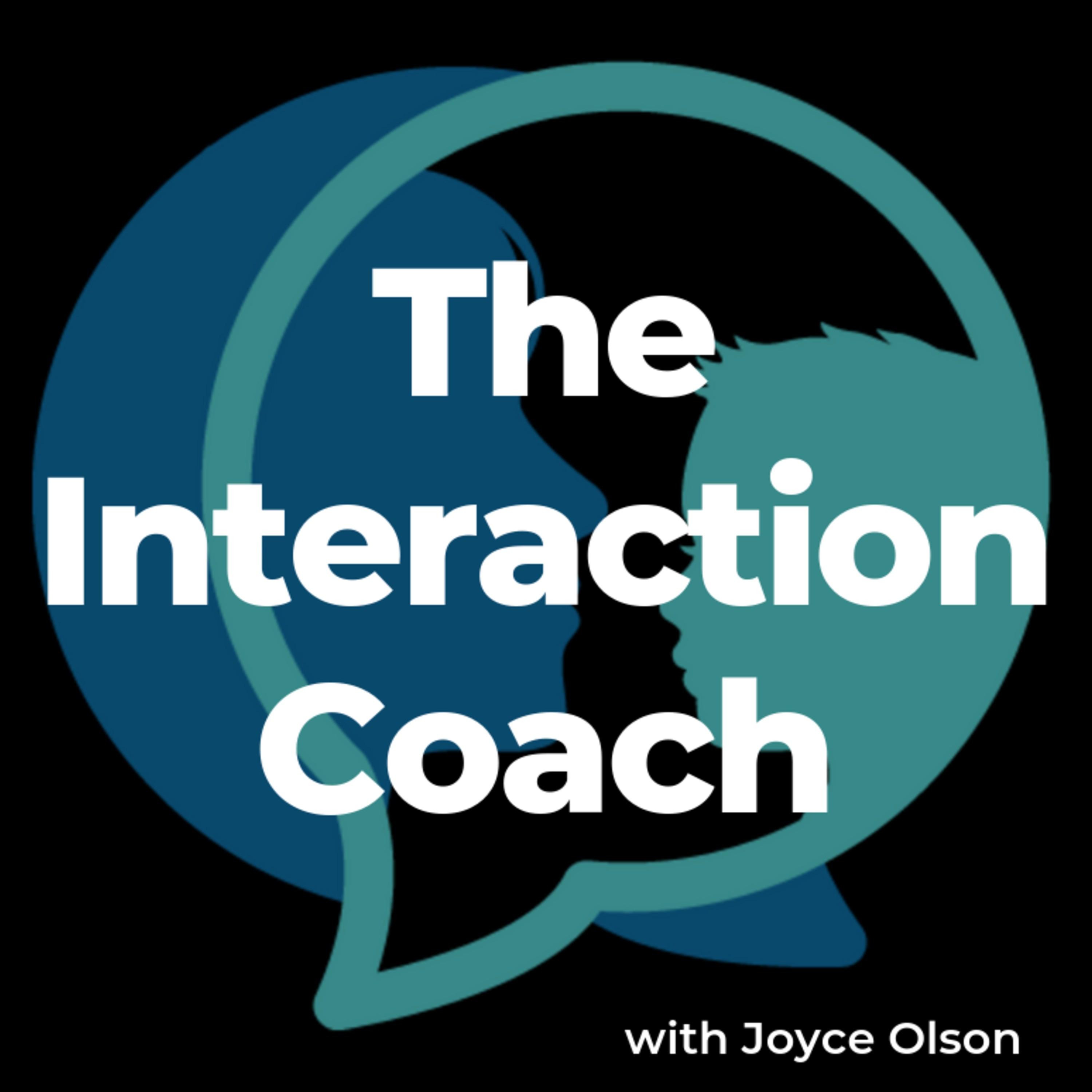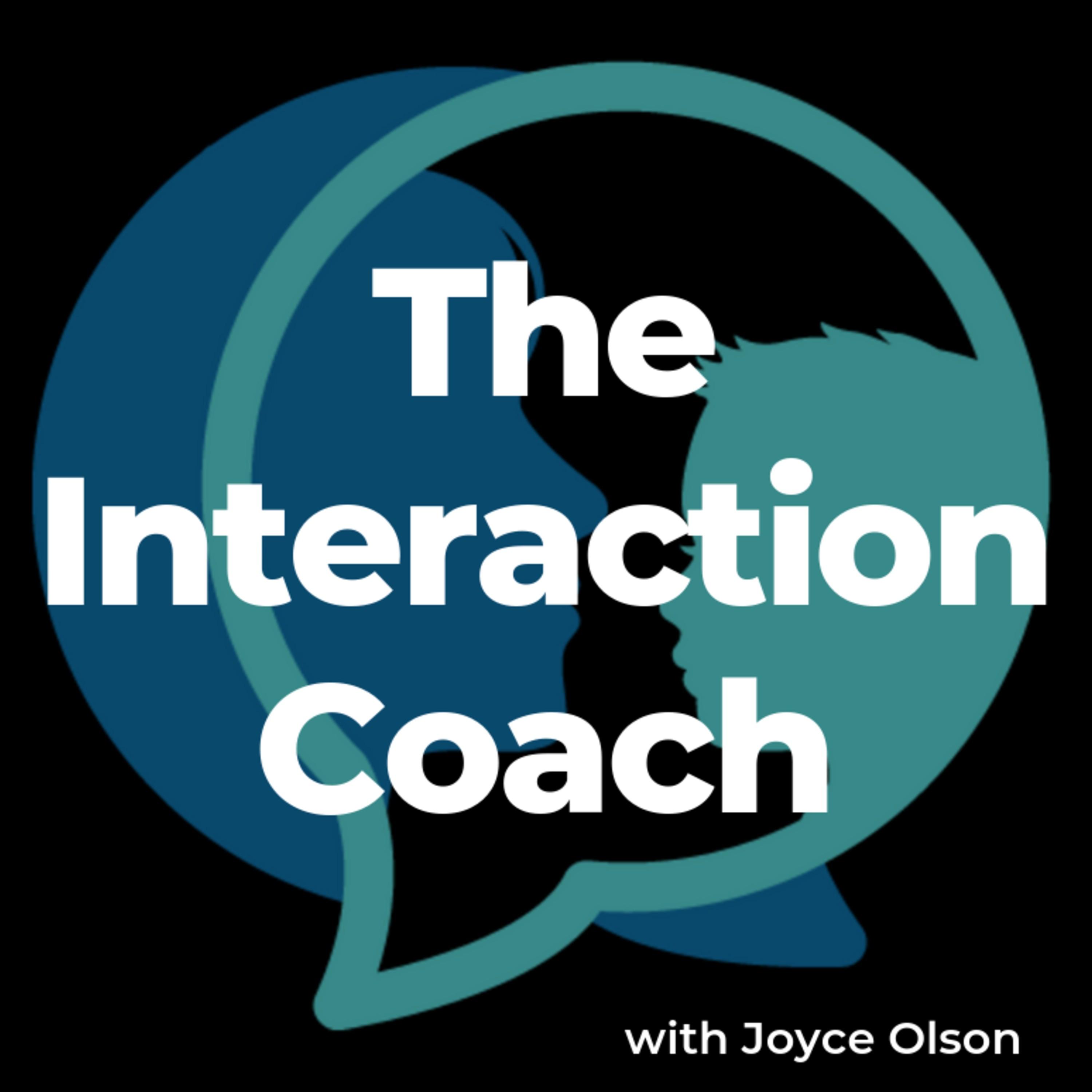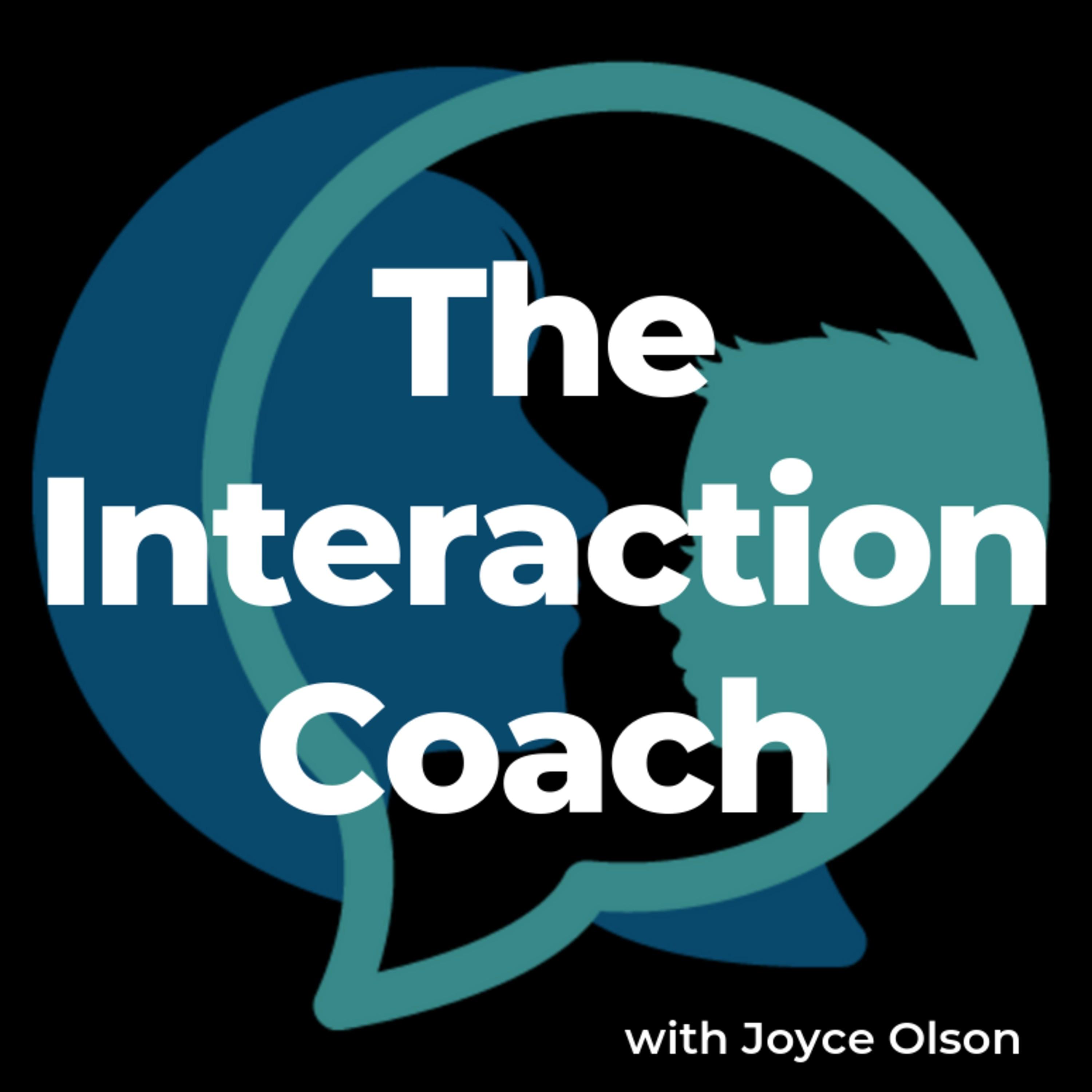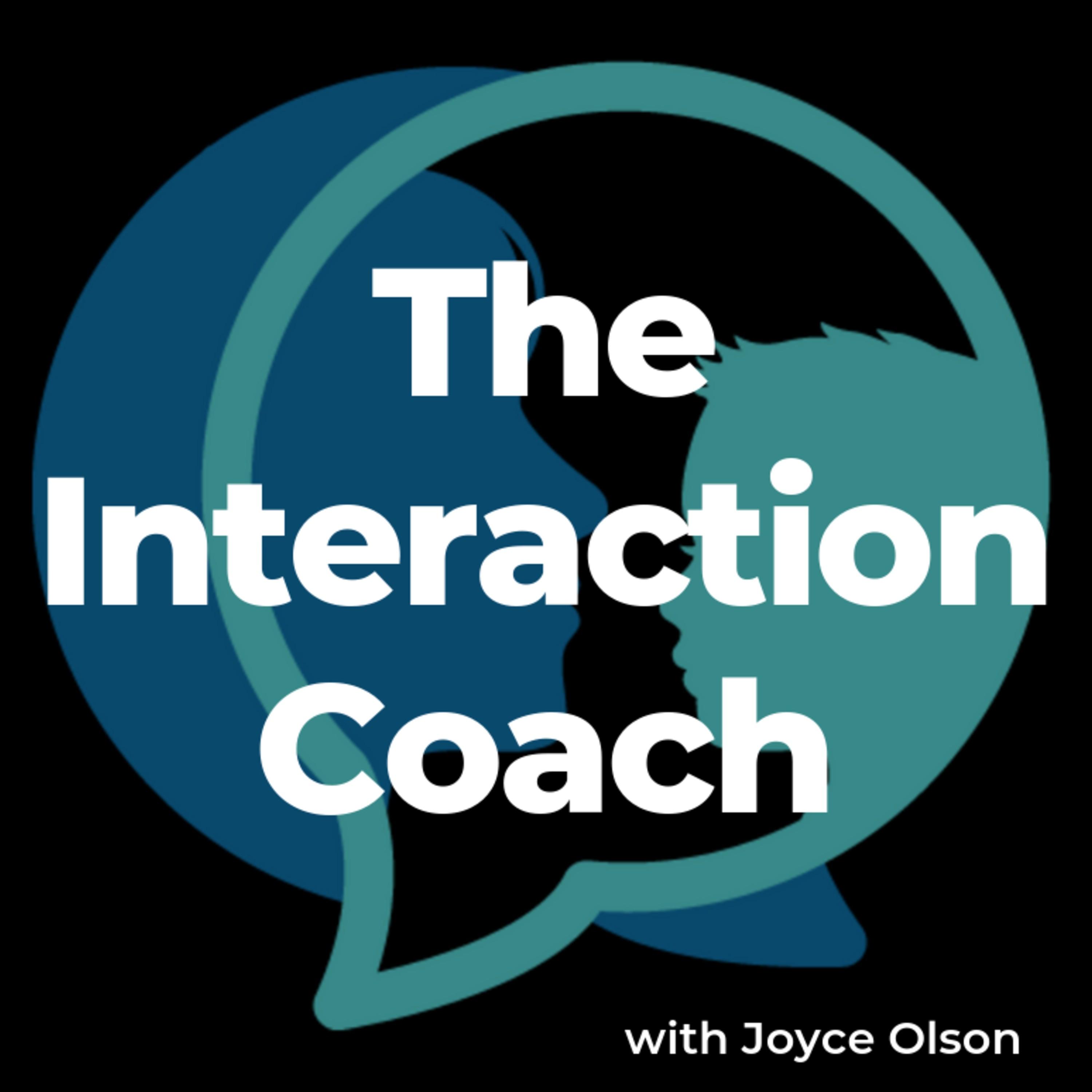Discover The Interaction Coach
The Interaction Coach

The Interaction Coach
Author: Joyce Olson
Subscribed: 11Played: 186Subscribe
Share
© 2020 The Interaction Coach
Description
You can help your child learn to talk with speech-language pathologist Joyce Olson of The Interaction Coach. Listen to daily tips that make every interaction a learning opportunity for speech and language development. Whether your child needs to start using words, make longer sentences, or improve social communication, this podcast is for you.
234 Episodes
Reverse
Welcome to The Interaction Coach podcast, part of a collection of resources for parents of a child with a speech, language or communication challenge. The podcast is for parents like you who want to know what to expect in their child’s development, how they can help their child at home, and how to make informed decisions if they need to find speech and language therapy services. You’ll get practical, easy-to-use ideas that will help your child boost their communication development—starting today. Stop worrying and start celebrating all the changes you’ll learn to recognize that your child is making as you interact together. You’ll also feel more confident and informed if you need to search for therapy services, so you can work as an equal part of the team if your child is receiving therapy. I’m speech-language pathologist Joyce Olson. I’ve got over 40 years’ experience working with children from birth to age 22 and with adults with significant communication challenges. My mission is to get information and support to as many parents as possible by removing roadblocks that so many parents experience. You’ll find the podcast helpful if You wonder or worry if your child’s speech & language development is on track You believe your child has a communication difficulty but don’t know where to turn for help You want to know what you can do at home to support your child’s communication development you want to learn about recommended, research-based therapy approaches that would best meet your child's specific needs Season 1 starts with essential information every parent should understand about how communication skills develop and what you can do in your everyday activities that will help build those skills faster and stronger. Future seasons will explain later language development and effective therapy approaches that address a variety of communication challenges. The field of speech and language is huge, so we’ll also have guests to explain their areas of specialization in diagnosing and treating communication disorders. Learn about more parent resources at www.TheInteractionCoach.com Welcome to The Interaction Coach. I’m looking forward to communicating with you!
Visit www.TheInteractionCoach.com to find more parent information and resources. In this episode Joyce tells a bit about her 40 years of experience working with and on behalf of children in her roles as a speech-language pathologist, elementary principal and director of special education. Now nearing the end of her career, Joyce shares a personal experience that motivated her to find a way to get more information and support out to parents who need it when their child is not learning speech, language and communication skills as expected. Learn about Joyce's vision of how The Interaction Coach can connect parents with speech-language professionals and build a library of resources you need for every stage of your child's communication development.
Welcome to The Interaction Coach podcast. Seasons 1–8 focus on how to build children’s communication skills from using no words to using two-word sentences. Use this link to get the checklist for finding your child's current communication level. In later seasons we’ll address later communication development and also what can be done to support children who have difficulty with their communication skills. These podcast episodes are short so you can do a quick listen and then try out a new activity daily during your everyday interactions with your child. You can use the ideas with your child to help strengthen their communication skills and get them to the next level of development. These parent-child activities are based on the concept of mediation — we identify what a child can do independently, then give them a little support to help them practice a skill that’s a little more advanced. Parents are the ideal mediators because they spend the most time with their child. You can make your mediation even more effective when you can do two things: recognize all the little details that tell you where the child is performing right now know what would be the next, little-more-advanced level of performance That’s the information you get with these podcast episodes. You'll identify your child’s current performance in detail and know what to expect next. This knowledge helps you make the most out of every learning opportunity your child has throughout the day. Another huge benefit of being able to recognize all the small details in development is that it helps change your mindset. Instead of worrying about what your child is not doing, you can celebrate the changes that happen every day that will build up to the bigger skills we are looking forward to. How to use the podcast Listen to one episode per day. I’ll give you a little pearl of wisdom about the area we’re targeting, and then I’ll describe one activity you can do together with your child to build a skill. Don’t just do the activity that day, though. Think of a time you can integrate the activity into your daily or weekly routine. Repeated practice is what builds learning and gets your child to the next level. IMPORTANT— Each of the eight levels in this series is based on typical development that requires at least three months. You can cycle through the episodes so you listen to each one several times. You might run across some activities that don’t make sense for your home. That’s okay. Just skip to the next one. The important idea is to do some of these activities every day. Try them all out and then use the ones that work best for you and your child. Where to start listening I recommend you start at the beginning and work your way through in order. Your child may be well beyond Level 1, but you can learn some important background knowledge by listening from the beginning. You can “speed-listen” through multiple episodes until you reach your child’s current level. Another option is to use this checklist to help identify your child’s current performance level. Check off items in the column titled Skills until you find gaps. Start doing daily podcast activities at this level. Monitor your progress Each time you start a new level, you will download a table called Activities to Build Skills. Each table lists all the skills and activities for that level, aligned with the podcast episodes. Each table divides the skills into four communication domains: social interaction, play, language and literacy. Some other big skills areas (like motor movement) are listed inside these big four domains. That’s because I want you to see how all of these areas interact and support communication development. The column called Targets lists skills we expect to see by the end of the level. Keep that in mind. Your child won’t start doing the skill when you start using an activity. Gradually, though, you will see small changes in how they respond until they get to the target level. The column called Activities lists the one-a-day prescription of activities that help build your child’s skills and get them to the target level. Keep the table somewhere handy so you can refresh your memory on the activities you’ve selected to use. Keep it some place visible to help remind you to use the activities. You may also use the blank space in or near the Target column as a mini-diary of progress. Add a date and short note to describe how your child is currently responding to an activity. Your notes will help you notice and remember all the signs of progress that happen along the way. Keep it up! They say it takes two months to establish a new habit. One of these suggestions may help you form a daily habit of listening to the podcast. Set a reminder on your phone to cue you to listen at a certain time of the day. Integrate listening into an existing routine: before you get out of bed in the morning, fixing your hair, traveling to work, break time. Invite a family member or friend to listen to the podcast and talk about it with you.
Download the list of Level One Targets and Activities. Social interaction is the foundation for all communication. When we are teaching speech and language skills, we need to keep the social reasons for communicating at the center of our activities. Harvard University’s Center for the Developing Child coined the term Serve and Return to name the back-and-forth interactions between infants and adults. This social interaction is responsible for building the connections between brain cells that develop memory and learning. Read about Serve-and-Return and social interaction here. Watch a video about Serve-and-Return. Today’s activity: Be face-to-face with your child as you talk or make sounds. Find more resources at www.TheInteractionCoach.com
Download the list of Level One Targets and Activities. Send your questions to mail@interactioncoach.com Mutual attention is when both interaction partners are paying attention to each other. Mutual attention may be demonstrated in many ways. Eye contact is just one of those ways. Mutual attention is developed through engaging, pleasant shared activity; it is not forced. Today’s activity: Exercising with your child. Find more resources at www.TheInteractionCoach.com
Download the list of Level One Targets and Activities. Children need many opportunities to develop their muscles while in a prone position (on their tummy). You can still spend face-to-face time with your child while having them lay on their tummy or side. (Plus you get to lay down for a few minutes!) Social interaction is the foundation for all communication. When we are teaching speech and language skills, we need to keep the social reasons for communicating at the center of our activities. Today’s activity: Look at each other, talk and smile while your child is on their tummy. Find more resources at www.TheInteractionCoach.com
Download the list of Level One Targets and Activities. Find more resources at www.TheInteractionCoach.com Joint attention is when both interaction partners are paying attention to the same object or activity. Before joint attention can be used, your child must be able to use their vision to notice and track objects at a distance (i.e., follow moving objects with their eyes). Today’s activity: Be face-to-face with your child as you smile and talk. Slowly move to the side to encourage your child to follow you with their eyes.
Download the list of Level One Targets and Activities. We pay attention someone else and their interests when we are comfortable with that person and enjoy spending time with them. Joint attention requires your child to notice your face and or body language that indicates where your interest lies, then they follow your line of sight or action to see what you are noticing. We want your child to use joint attention without prompting (without needing to be told “look”). That means you need to build your child’s interest in you as a source of pleasant feelings and interesting experiences. Today’s activity: Observe how your child responds to various soothing experiences like feeding, rocking, hugging, swaddling, laying down, music, sucking, soft texture, carrying. Pair your voice with soothing activities. Find more resources at www.TheInteractionCoach.com
Download the list of Level One Targets and Activities. Infants draw us to them with their eye gaze so we can engage in Serve-and-Return interactions with them. Their smiles give us extra reinforcement that keep us coming back for more interactions. You can build longer back-and-forth exchanges with your child by responding to what they do. Today’s activity: When your child smiles, smile and/or talk then wait for your child to respond with another smile. Repeat. Find more resources at www.TheInteractionCoach.com
Download the list of Level One Targets and Activities. A person’s affect is how they feel and how they show their feelings. Engagement means how involved a person is in an activity. You are building your awareness of how your child expresses their feelings and building their engagement with you. Today’s activity: Hold your small child under their arms so you are looking face to face. Use their leg movements to help you bounce them up and down while you use engaging facial expressions, sounds and words. Find more resources at www.TheInteractionCoach.com
Download the list of Level One Targets and Activities. Everyone has personal preferences for what they find engaging and pleasant. Be aware of your child’s reactions. For activities your child enjoys, encourage them to engage for an increasing number of back-and-forth exchanges. For activities your child finds unpleasant, don’t push it. Build up to those gradually by doing it on yourself (demonstrating). Later, you might do something similar but less intrusive with your child until they become comfortable at that level. Build gradually; don’t push. Today’s activity: Wiggle your finger, “here it comes,” and beep their nose. Find more resources at www.TheInteractionCoach.com
Download the list of Level One Targets and Activities. Send your questions to mail@interactioncoach.com Now that we’ve discussed social interaction, try this: Explain what is social interaction and why is it so important to communication development? Always focus on turn taking and keeping the activity pleasant. You are both sharing the activity. Today’s activity: tickle or walk your fingers up child’s tummy Find more resources at www.TheInteractionCoach.com
Finding this useful? PLEASE LEAVE A REVIEW in your podcast app so other parents can find the podcast. Download the list of Level One Targets and Activities. Motor skills are important for well-developed play skills, which are important for well-developed language and communication skills. Today’s activity: place a rattle or noisy toy in child’s hand as part of your social interaction Find more resources at www.TheInteractionCoach.com
Download the list of Level One Targets and Activities. Developing a grasp is important for your child so they can learn to pick up objects for play. Today’s activity: Stroke your child’s fist or open hand with your index finger to encourage them to grasp it. Talk and smile back and forth while you shake your child’s hand. Find more resources at www.TheInteractionCoach.com
Send your questions to mail@interactioncoach.com. Download the list of Level One Targets and Activities. Your child will begin to show interest by waving their arms (and legs). With practice, your child learns to direct their arm movement toward the object. Later this practice will help them learn to reach directly for an object. Today’s activity: Dangle a sock or interesting object in front of child’s face to get their attention. Tickle their hand with it and dangle it again. Find more resources at www.TheInteractionCoach.com.
Download the list of Level One Targets and Activities. Eye tracking is when your child moves their eyes to follow the movement of something interesting. It’s important for play development because we don’t want your child to lose interest in something just because it moves out of sight. Today’s activity: Hold an object about 10-12 inches from child’s face. Slowly move it back and forth, up and down, and in a slow circle. Find more resources at www.TheInteractionCoach.com
Download the list of Level One Targets and Activities. Mobiles are fun for little ones to watch and good exercise for their eyes. Think of ways you can also spend some time interacting with your child while you both look at the mobile (joint attention!) Today’s activity: Talk and reach toward a mobile while you and your child are lying side by side. Find more resources at www.TheInteractionCoach.com
Download the list of Level One Targets and Activities. Watching an object as it slowly comes closer is naturally interesting to your child. Children tend to show extra interest in unfamiliar objects. Keep it interesting and interactive by adding your voice, a tickle or new object. Today’s activity: While dressing, hold an item over your head and slowly bring it toward your child to tickle their face, chin or tummy. Find more resources at www.TheInteractionCoach.com
Download the list of Level One Targets and Activities. When your child is a little older, they start to anticipate things that will happen in the future. Learning to anticipate outcomes starts at this level by learning to recognize an object that’s approaching and associating the object with a result. Today’s activity: When you are bring a bottle or food to your child, call attention to it (“here it comes”) and move it slowly toward your child. Take enough time so the child can focus on it and track its movement. Find more resources at www.TheInteractionCoach.com
Download the list of Level One Targets and Activities. Find more resources at www.TheInteractionCoach.com The ceiling is several feet away but it’s easy for your child to notice a light shining on the ceiling in a darkened room. A nightlight that projects on the ceiling or a flashlight works well for this activity. Today’s activity: Lay your child on their back in a darkened room. Move a light slowly on the ceiling while you sing or talk to your child.


